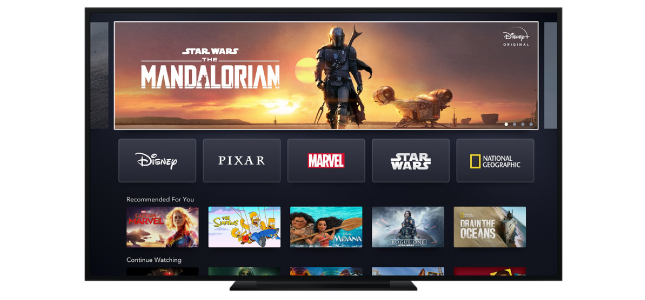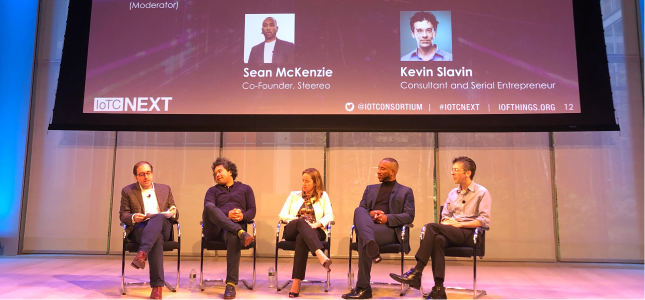It’s no secret that consumers want and expect personalized experiences from brands. In an increasingly data- and technology-driven marketplace, companies can’t simply predict the needs and preferences of their customers; they need to go a step further and anticipate them. Brands that take the time to learn why their customers buy goods and services—not merely what they buy—will fare the best amid evolving customer journeys, experts say. But while many are embracing personalization, its nuances and potential pitfalls are causing some to miss the mark.
“Personalization is part of the experience; it actually is survival now,” says Jeriad Zoghby, global personalization lead at Accenture Interactive. “If you can’t personalize your experience, you risk becoming a commodity.” Brands need to truly differentiate themselves if they want to stand out, or they could be left behind.
“We had an evolution happen where we moved from customization to personalization through segmentation, [but] this new era of personalization now is all about individualization,” says Brendan Wichter, vice president and principal analyst for digital business strategy at Forrester. “What kind of relevant, real-time, value-added experiences can you provide me on my path to purchase?”
It’s no longer enough to segment customers, he says, using an example of a clothing retailer. A brand may notice a male shopper may like to buy sweaters, for instance, but needs to delve deeper to cull and react to his habits: If he tends to shop on weekends, the brand should send him communications on Fridays; the brand should notice whether he tends to buy multiple sweaters at once or prefers to buy entire outfits at a time.
“It’s about what makes us, us,” Wichter says. Personalization has been around for decades, mainly in the form of product recommendations, but “today it’s about content, it’s about cadence, it’s about customer engagement,” he says. “Everything can be personalized, even features and functionality, whether [customers] see it or not.”
Customers want to control their journey
Most consumers (91 percent) are more likely to shop with brands that recognize them, remember them, and provide relevant offers and recommendations, according to the 2018 Personalization Pulse Check, a global Accenture study. And 83 percent may share their data if it’ll give them a more personalized experience. “Instead of businesses defining their journeys, consumers want brands to design experiences that help them create their own,” according to the Accenture report. But some brands are falling short. The study found 48 percent of consumers have left a brand’s website, opting to buy on another site or in store because the site was poorly curated.
“This statistic has increased in every region surveyed, indicating that digital experiences are trending in the wrong direction,” the report reads. “Consumers are leaving brand websites and making purchases elsewhere at a higher rate than a year ago because expectations are growing faster than the experiences are evolving.”
Brands that do personalization successfully understand what drives consumers to act, Zoghby says. “It’s almost, at the end of the day, a better form of listening,” he says. “Companies are starting to finally figure this out. It seems like a small step, but it’s really not done [in many cases]. Most companies know what you do; they don’t know why you do it.” There’s a shift underway in which brands need to move beyond prediction into anticipation, he adds, and savvy brands are letting customers be in control of the journey.
A big piece of that puzzle, Wichter says, is data analysis.“To have a personalization strategy, you need to have a data strategy,” he says. “Organizations that don’t recognize that aren’t able to do great personalization.” Netflix is a brand that excels in this, says Robb Hecht, adjunct professor of marketing at Baruch College in New York City, part of the City University of New York system.
“Every move Netflix makes is driven by vast amounts of data and, in a way, your ‘watchlist’ is as much customized by the company as it is by the user,” says Hecht, who teaches outcomes-focused marketing. “The service, which runs hundreds of A/B tests per year, knows when you press play or hit pause, when you stop watching a title partway through, when you click that little ‘+’ button to add something. It harvests information from over 275 million member profiles, then feeds the data into its personalization endeavors. This is why no user is ever shown the exact same combination rows on the Netflix ‘start’ page.”
A two-way conversation with brands
Another key is creating opportunities for dialogue with consumers, Wichter says, noting beauty retailer Sephora does this well. Sephora shoppers can use in-store beauty stations to say what they like and don’t like, use an app to virtually try on products and give feedback, and visit the company’s website to discuss what products interest them—all meaningful opportunities for dialogue and data collection, he says.
“This is not that hard,” he says. “The technology can be expensive, but this is not emerging technology—it’s out there.”
Zoghby foresees brands re-focusing on expertise. Whereas in the past shoppers used to find experts in brick-and-mortar stores, brands today can offer the same type of concierge service, he says—but digitally.
“The trend is moving from recommendations to advice, because recommendations aren’t advice,” he says. Amazon, he adds, is one company already doing this with its fashion service that allows consumers to get wardrobe advice from the comfort of their homes. Recommendations are merely the results of curating, he says, whereas advice is “thinking to ask you questions you wouldn’t ask yourself. Expertise can be a brand differentiator.”
Personalization is in the eye of the beholder
As some have learned the hard way, personalization isn’t always easy. As Wichter puts it: “It’s only personalization when you get it right.” Making it more challenging, he adds, “Personalization is determined by the receiver. That’s a big eye-opener for companies today.”
Some brands mistakenly expect their efforts to immediately result in sales, he says. “Don’t focus on personalization for conversions; don’t worry about that. You’re trying to create loyalty. In this day and age, loyalty means something. If you can create loyalty, you’re a differentiated brand.”Another common misstep is underappreciating the value of testing, Zoghby says. Successful companies “test like crazy,” he says, and they test everything: from data use and cost effectiveness to placement and font sizes.
“Testing creates the orchestration of the experience, and that’s why testing should never be pushed to the back; it should always be in the forefront,” Zoghby says. “Most companies don’t have the talent [in house] yet to do this. A lot of them struggle because they don’t have those skill sets internally.”
Brands also need to be mindful of how much to push the boundaries, Hecht warns.
“Over-personalization can be a pitfall,” he says. Customers want brands to know and remember them, but “consumers also don’t want to be too overtly re-targeted, feel like they are being stalked, or feel like they are receiving offers that tap into too-sensitive information.”
It can be a fine line, and well-intentioned attempts to offer customized experiences could veer from personal to “creepy.” Most of the consumers (73 percent) in the Accenture study said a business has never communicated with them online in a way that felt too invasive—but it does happen. Of the 27 percent of consumers who said they have had a brand experience that was too personal, 64 percent said it was because the brand had information about the consumer that the consumer didn’t share knowingly or directly—for example, a brand made a recommendation based on a purchase a consumer made with another business.
When asked what they consider to be the “creepiest engagement tactics,” 41 percent of consumers said getting a text from a brand or retailer when walking by a store; 40 percent said receiving a mobile notification after walking by a store, and 35 percent cited ads on social sites for items browsed on a brand website.
“Too often in personalization, we don’t translate [the strategy] back to the real world,” says Zoghby. Some things that seem good on paper are too much when actually put into use. There are some generational differences among consumers in what’s creepy and what’s not, he adds. Younger consumers are less likely to feel targeted personalization efforts cross the line than their older counterparts. But over time, older consumers have been willing to adapt to changing trends, even if not as quickly as millennials, Zoghby says.
Stay human
Generally, most people are happy to share data if they feel a brand will use it to create a better experience for them, he says. “There’s nothing more frustrating than having to remind a brand who you are, why you’re calling, and what you want.”
Adds Wichter, “We like to feel like someone understands us. You feel known and understood. You can’t discount the value of human emotions. We love to feel understood; don’t discount that as a brand.” It can be easy for brands to get immersed in the data and lose sight of the bigger picture, but they must keep in mind who they ultimately aim to serve, says Hecht.
“As brands increasingly transition from products to services, and rebuild customer relations over time, it will be tempting to over-personalize,” he says. “But remember, you have to work with the customer, read the customer. Real humans are at the center of the digital experience—not the marketing technology and databases.”













